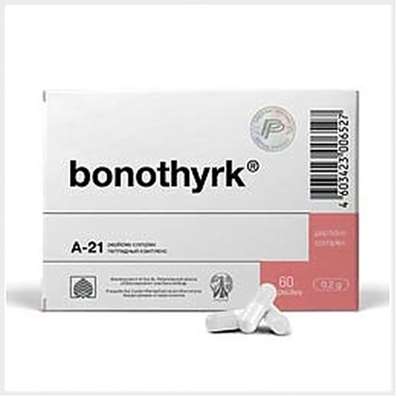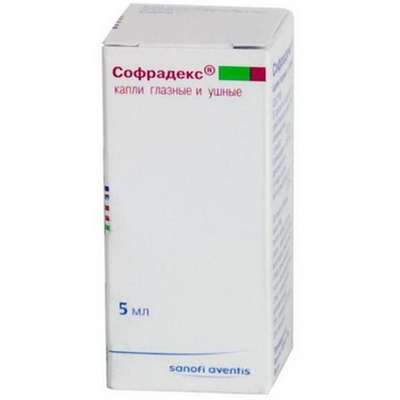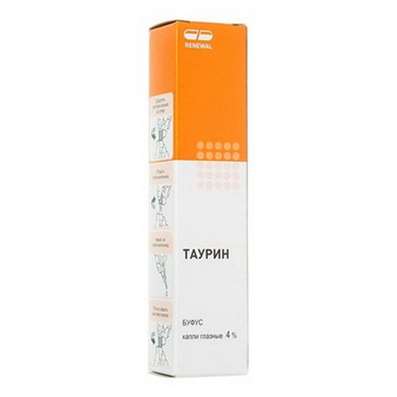Instruction for use: HAES-steril
I want this, give me price
Dosage form: Solution for infusions
Active substance: Amylum hydroxyaethylicum
ATX
B05AA07 Hydroxyethyl starch
Pharmacological group
Substitutes for plasma and other blood components
The nosological classification (ICD-10)
A41.9 Septicemia, unspecified: Septic diseases; Septicemia / bacteremia; Toxico-infectious shock; Endotoxin shock; Bacterial septicemia; Bacterial infections of severe course; Generalized infections; Generalized systemic infections; Infections generalized; Wound sepsis; Septiccopymia; Septic-toxic complications; Septicemia; Septic conditions; Septic shock; Septic condition; Septic shock
E86 Decreased fluid volume [hypovolaemia]: Water deficit recovery; Indemnification of isotonic deficiency of water; Compensation for isotonic sodium deficiency; Compensation BCC; Replenishment of water deficit with stored KShS; Replenishment of fluid volume; Replenishment of BCC; Replenishment of electrolytes with stored KHS; Hypovolemic conditions; Hypovolemic condition; Hypovolemia; Hypotonic form of hypohydration; Hypochloremia with dehydration; Dehydration of different origin; Dehydration in children; Substitution of plasma volume for blood loss in pediatrics; Substitution of plasma with its losses and burns; Isotonic dehydration; Isotonic form of hypohydration; Violation of the water-salt balance; Dehydration;Dehydration in acute intestinal infections; Acute hypovolemia; Loss of fluid in burns; Toxicosis with exsycosis
R57.1 Hypovolemic shock: Hypovolemic shock during surgery; Acute hypovolemia
R57.8.0 * Burn shock: Pain shock for burns; Burn shock
T79.4 Traumatic shock: Haemorrhagic shock; Crash Syndrome; Posthemorrhagic shock; Postoperative shock; Post-traumatic shock; Post-traumatic shock; Traumatic shock; Syndrome of hemorrhagic shock and encephalopathy
Z100 * CLASS XXII Surgical practice: Abdominal surgery; adenomectomy; Amputation; Coronary angioplasty; Angioplasty of the carotid arteries; Antiseptic skin treatment for wounds; Antiseptic Hand; Appendectomy; atherectomy; Balloon coronary angioplasty; Vaginal hysterectomy; The coronary bypass; Interventions in the vagina and cervix; Interventions on the bladder; Intervention in the mouth; Restoration and reconstructive surgery; Hand hygiene of medical personnel; Gynecologic surgery; Gynecological intervention; Gynecological surgery; Hypovolemic shock during operations; Disinfection of purulent wounds; Disinfection of wounds edges; Diagnostic intervention; Diagnostic procedures; Cervical Diathermocoagulation; Long-surgery; Replacing the fistula catheters; Infection in orthopedic surgery; Artificial heart valve; cystectomy; Short-term outpatient surgery; Short-term operation; Short surgical procedures; Krikotireotomiya; Blood loss during surgery; Bleeding during surgery and in the postoperative period; Kuldotsentez; laser photocoagulation; laser coagulation; retinal laser coagulation; Laparoscopy; Laparoscopy in Gynecology; CSF fistula; Small gynecological operations; Small surgical procedures; Mastectomy and subsequent plastic; mediastinotomy; Microsurgical operations on the ear; Mukogingivalnye operation; suturing; Minor surgery; neurosurgical operation; Immobilization of the eyeball in ophthalmic surgery; testectomy; pancreatectomy; Perikardektomiya; The period of rehabilitation after surgery; The period of convalescence after surgery; Percutaneous transluminal coronary angioplasty; Pleural thoracentesis; Pneumonia postoperative and posttraumatic; Preparation for surgical procedures; Preparation for surgery; Preparation of the surgeon's hands before surgery; Preparation of the colon for surgical procedures; Postoperative aspiration pneumonia in neurosurgical and thoracic surgery; Postoperative nausea; Postoperative bleeding; postoperative granuloma; postoperative shock; The early postoperative period; myocardial revascularization; Radiectomy; gastric Resection; bowel resection; uterine Resection; liver Resection; enterectomy; Resection of part of the stomach; Reocclusion of the operated vessel; Bonding tissues during surgical procedures; Removal of sutures; Condition after eye surgery; Condition after surgery; Condition after surgery in the nasal cavity; Condition after gastrectomy; Status after resection of the small intestine; Condition after tonsillectomy; Condition after removal of the duodenum; Condition after phlebectomy; Vascular surgery; Splenectomy; Sterilization of surgical instruments; Sterilization of surgical instruments; sternotomy; Dental surgery; Dental intervention in periodontal tissues; strumectomy; Tonsillectomy; Thoracic surgery; Thoracic surgery; total gastrectomy; Transdermal intravascular coronary angioplasty; Transurethral resection; Turbinektomiya; Removal of a tooth; cataract surgery; Removal of cysts; tonsillectomy; Removal of fibroids; Removing the mobile primary teeth; Removing polyps; Removing broken tooth; Removal of the uterus body; Removal of sutures; Fistula likvoroprovodyaschih ways; Frontoetmoidogaymorotomiya; Surgical infection; Surgical treatment of chronic limb ulcers; Surgery; The surgery in the anal area; The surgery on the colon; Surgical practice; The surgical procedure; Surgical interventions; Surgery on the gastrointestinal tract; Surgical procedures on the urinary tract; Surgical procedures on the urinary system; Surgical intervention of the genitourinary system; Surgical procedures on the heart; Surgical manipulation; surgery; Surgery on the veins; Surgical intervention; Vascular surgery; Surgical treatment of thrombosis; Surgery; cholecystectomy; Partial gastric resection; hysterectomy; Percutaneous transluminal coronary angioplasty; Percutaneous transluminal angioplasty; Coronary artery bypass; tooth Extirpation; Extirpation of milk teeth; pulpectomy; pulsative cardiopulmonary bypass; tooth Extraction; teeth Extraction; cataract extraction; Electrocoagulation; endourological intervention; episiotomy; Etmoidotomiya; Complications after tooth extraction
Composition
Solution for infusion 6% - 1 l
Active substances: hydroxyethyl starch (HES) (200 / 0.5) 60 g
9 g of sodium chloride
Water for injection up to 1 liter
sodium hydroxide (to adjust pH) q.s.
anions and electrolytes: Na + - 154 mmol / l; Cl- - 154 mmol / l
metrics: pH - 3,5-6,0; titratable acidity - less than 1 mmol NaOH / l; Theoretical osmolarity - 308 mOsm / l
Solution for infusion 10% - 1 liter
Active substances: hydroxyethyl starch (HES) (200 / 0.5) 100 g of
9 g of sodium chloride
Water for injection up to 1 liter
sodium hydroxide (to adjust pH) q.s.
anions and electrolytes: Na + - 154 mmol / l; Cl- - 154 mmol / l
Indicators: pH - 3,5-6,0; titratable acidity - less than 1 mmol NaOH / L; Theoretical osmolarity - 308 mOsm / l
Description of dosage form
Hydroxyethyl starch (GAK), are prepared from amylopectin with average molecular weight of 200,000 D and a degree of substitution of about 0.5, which means that 10 glucose residues comprise 5 amylopectin hydroxyethyl groups. HES structure similar glycogen, which explains its high tolerance and low risk of anaphylactic reactions. It features high stability of the solution and prevents flocculation with temperature fluctuations.
Pharmachologic effect
Mode of action - plazmozameshchath.
Increases volume of blood circulation. It provides improved hemodynamics and microcirculation for 3-4 hours.
Pharmacokinetics
HES administered by parenteral undergoes enzymatic cleavage of alpha-amylase blood, which leads to the formation of oligo- and polysaccharides of various molecular weights. . T1 / 2 from the bloodstream for about 4 hours Write mainly via the kidneys; 50% of the dose excreted in urine in less than 24 hours, a small amount of the drug is temporarily deposited in the tissues, and only 10% continues to circulate in the blood serum.
Sodium chloride is excreted mainly by the kidneys, and a small amount is excreted in the later through the skin.
Indications of the drug HAES-steril
Prevention and treatment hypovolemia and shock in surgical interventions (hemorrhagic shock), traumatic lesions (traumatic shock), infections (septic shock), burns (burn shock); for hemodilution therapy; to reduce the need for donor blood during operations (acute normovolemic hemodilution).
Contraindications
Hypersensitivity (including starch), intracranial hypertension, arterial hypertension, intracranial hemorrhage, decompensated chronic heart failure, acute renal failure (oligo- and anuria), severe bleeding diathesis, cardiogenic pulmonary edema, anticoagulation, coagulopathy, hyperhydration, hypervolemia , dehydration (if necessary correction of electrolyte metabolism), gipofibrinogenemia, severe thrombocytopenia, hemodialysis.
Precautions: during lactation, compensated chronic heart failure, chronic renal failure, chronic liver disease, von Willebrand disease, hemorrhagic diathesis.
Pregnancy and breast-feeding
Use during pregnancy and lactation - only for health reasons (data on the use of the drug not available at this time).
Side effects
Rarely - allergic reactions of varying severity: skin rash, tachycardia, a sharp decrease in blood pressure, dizziness, nausea, vomiting, bronchoconstriction, anaphylaxis up to cessation of breathing and heart activity, pain in the lumbar region.
Long-term daily use of sterile-Hayes in the middle and high doses often causes hard itching amenable to treatment.
High doses Hayes sr resulting dilution effect can cause an increase in bleeding time. Perhaps the decline in hematocrit and hypoproteinemia development. When using Hayes-sr may increase serum amylase activity that can interfere with the diagnosis of pancreatitis.
Interaction
Pharmaceutical incompatible with solutions of other drugs. Concomitant use of HES heparin or oral anticoagulants may prolong bleeding time. Particular attention should be given to patients taking other drugs, especially beta-blockers and vasodilators, as changes in systemic blood pressure and heart rate can not be detected due to obemozameschayuschey therapy. It should be borne in mind that the HES may have an impact on the clinical-chemical parameters (glucose, protein, ESR, fatty acid, cholesterol, sorbitdegidrogenazu, urine specific gravity). There are no data on interaction with food HES absent.
Dosing and Administration
IV.
Dosages employed for the treatment and prevention of hypovolemia and shock.
The maximum daily dose:
6% solution - 33 ml / kg / day (2500 ml per 75 kg per day or HES 2 g / day).
10% solution - 20 ml / kg / day (1500 ml per 75 kg per day or HES 2 g / kg / day).
Maximum infusion rate:
6% solution - 20 ml / kg / h (1 500 ml of 75 kg per hour, or 1.2 g of HES / kg / h).
10% solution - 20 ml / kg / hr (1500 ml per 75 kg per hour, or 2 g HES / kg / h).
In children under the age of 10 years, the rate of infusion should not exceed 15 ml / kg / h.
Children over 12 years: the average daily dose - 33 ml / kg, the maximum daily dose - 33 ml / kg (2 g HES / kg / day); Children from 3 to 12 years - 15-20 and 33 ml / kg, respectively
The doses used to reduce the amount of blood during surgery (acute normovolemic hemodilution).
1 (not to hematocrit below 30%) simultaneous administration sterila® Hayes-6 in a ratio of 1% is recommended for direct substitution preoperative own blood.
Sampling blood: 2.3-fold 500 ml own blood.
Daily dose: 2-3 infusions of 500 ml Haes-sterila® 6%.
Blood sampling rate: 1000 ml in 15-30 minutes.
The rate of introduction of Hayes-sterila® 6%: 1000 ml for 15-30 minutes.
Recommended doses for hemodilution therapy.
The criterion is the reduction of hematocrit determined for each patient. Infusion sterila® Hayes-6% 10% isovolemic can be performed (simultaneous selection own blood) or hypervolemic (without selection own blood) in small (250 ml), medium (500 ml) or high (twice 500 ml) doses. Avoid fluid overload when too rapidly and too high doses of the drug, the dose limit is 1.2 grams of HES / kg / day.
Use the following daily dose and rate of administration:
Daily dose:
- 250 ml (low dose)
- 500 ml (average dose)
- 2 x 500 ml per day (high dose)
Infusion Rate:
- 250 ml for 0.5-2 h
- 500 ml for 4-6 h
- 2 times with 500 mL of 8-24 hours.
Duration of application.
Treatment and prevention of hypovolemia and shock:
The extent and duration of hypovolemia is determined daily dose and duration of administration Hayes-sterila®.
Reducing the use of donor blood during surgery (acute normovolemic hemodilution).
Acute normovolemic hemodilution is used only once in surgical interventions. Reapply Hayes-sterila® possible with normal hematocrit values (not lower than 30%). Therapeutic hemodilution. Application Hayes-sterila® for hemodilution therapy is recommended within 10 days.
Precautions measures
At the beginning of the treatment is necessary to control the serum creatinine concentration. In terms of border creatinine (106-177 mmol / l, compensated renal failure) requires daily monitoring of the intracellular and extracellular fluid balance and renal excretory function.
Because of possible anaphylactic reactions the first 10-20 mL of sterile-Hayes should be poured slowly and with careful observation of the patient's condition.
In applying the drug requires regular monitoring of water and electrolyte balance and the number of white blood cells and platelets.
With the development of allergic reactions should stop administering the drug and conduct emergency measures: should appoint antihistamines, glucocorticoids (prednisolone 120 mg I / O); enter epinephrine 0.05-0.1 mg / in and introduce a 5% albumin.
lowering the maximum recommended daily dose of up to 250 mL when itching occurs.
The appearance of pain in the lumbar region requires discontinuation of drug administration, abundant fluid and frequent monitoring of serum creatinine.
Special instructions
Mixing with other drugs should be carried out under aseptic conditions. Ensure compatibility of medicines and good mixing.
Release form
Infusion solution, 6%, 10%. In 250 or 500 ml glass vials for infusion solutions of II of hydrolytic class glass, sealed with rubber (halobutyl) stopper, run-in aluminum caps fitted with plastic caps, control of the first opening (Evr.F.). By 10 bottles with holders dropper or without them, with instructions for use placed in a cardboard box (for hospitals).
In 250 or 500 ml plastic bottle fitted with a loop-holder for drip, capped plastic combined firm cover "ship-shape". At 10 or 20 vials are placed together with the instructions for use of cardboard (for hospitals) in the box.
250 or 500 ml in a polyolefin container (bag) "frifleks". Each container was placed in a plastic outer bag. At 10, 15, 20 or 30 containers with instructions for use placed in a cardboard box (for hospitals).
Manufacturer
Fresenius Kabi Deutschland GmbH, Germany.
D-61346 Bad Homburg, v.d.H., Germany.
Address Mission of the company "Fresenius Kabi Deutschland GmbH" in Moscow: 119435, Moscow.
Conditions of supply of pharmacies
For hospitals.
Storage conditions of the drug HAES-steril
In the dark place at a temperature of no higher than 25 ° C. Freezing is not allowed.
Keep out of the reach of children.
The shelf life of the drug HAES-steril
Solution for infusions 6% - 3 years.
Solution for infusions 10% - 3 years.
Do not use beyond the expiration date printed on the package.

 Cart
Cart





